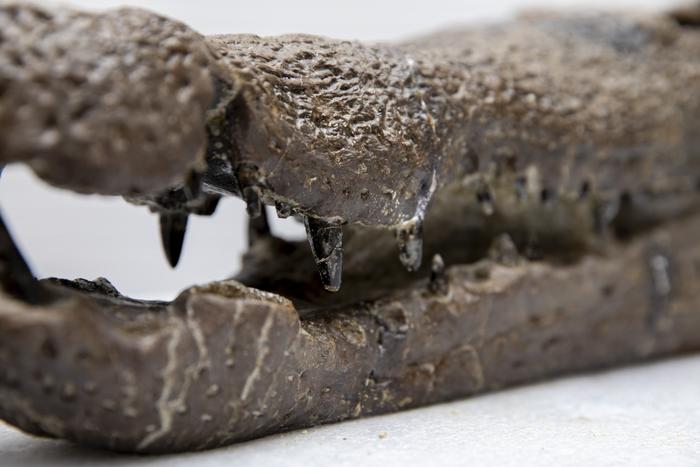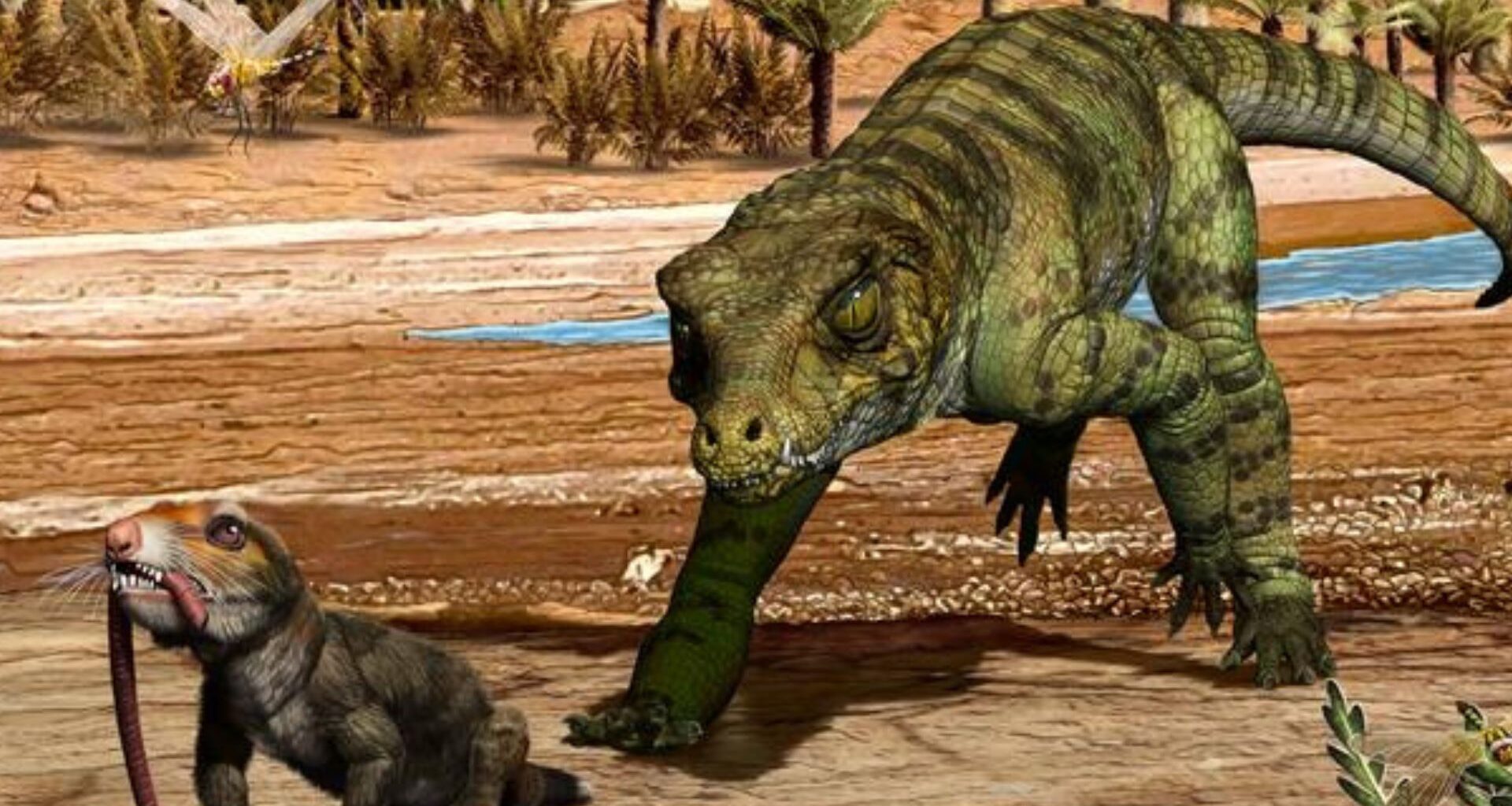Often labeled as living fossils, crocodilians have inhabited swamps and rivers for millions of years.
Surprisingly, the ancestors of modern crocodiles survived two mass extinctions throughout their 230-million-year history.
Researchers at the University of Central Oklahoma (UCO) and the University of Utah have discovered a key to the long-term evolutionary success of these prehistoric creatures: their exceptional adaptability in both diet and habitat.
“Lots of groups closely related to crocodylians were more diverse, more abundant, and exhibited different ecologies, yet they all disappeared except these few generalist crocodylians alive today,” said Keegan Melstrom, lead author and assistant professor at UCO.
For scientists and conservationists, knowing how species survive planetary crises can lead to more effective protection of vulnerable species.
 The teeth of this fossil Borealosuchus skull typify the toothy grin of semi-aquatic generalist predators that survived the end-Cretaceous mass extinction. Jack Rodgers/Natural History Museum of Utah
The teeth of this fossil Borealosuchus skull typify the toothy grin of semi-aquatic generalist predators that survived the end-Cretaceous mass extinction. Jack Rodgers/Natural History Museum of Utah
Examination of fossilized remains
The crocodiles, alligators, and gharials we know today are just the surviving members of a vast 230-million-year lineage called crocodylomorphs.
Earth has experienced five mass extinctions in the past, and a sixth is said to be underway.
Crocodylomorphs survived two of these major events: the end-Triassic extinction (around 201.4 million years ago) and the end-Cretaceous extinction (about 66 million years ago). The latter of which eliminated all non-avian dinosaurs from Earth.
Interestingly, this is the first study to reconstruct the dietary ecology of ancient crocodiles to pinpoint the traits that enabled some of them to survive and flourish through two major mass extinction events.
So, how do experts piece together the diets of creatures that lived millions of years ago? The answer is simple: fossilized teeth and skulls.
Sharp, knife-like teeth suggest a meat-slicing diet, while broad, grinding teeth indicate plant consumption. Moreover, the skull structure reveals jaw movement, further hinting at eating habits.
Great adaptability
Modern crocodylians are well-known as adaptable, semi-aquatic predators found in various freshwater habitats, with a non-fussy diet that evolves from small prey in their youth to larger animals as they mature.
The ancestors of today’s crocodilians were often ecological “generalists.”
This adaptability allowed them to weather the storms of the end-Triassic extinction, a time when many other dominant land-dwelling reptiles (like the pseudosuchians) disappeared.
The hypercarnivorous crocodylomorphs also likely perished, but the terrestrial generalists managed to pull through. According to the authors, their ability to eat almost anything explains their survival when many others died.
Following the end-Triassic extinction, the crocodylomorphs experienced an evolutionary explosion.
“Aquatic hypercarnivores, terrestrial generalists, terrestrial hypercarnivores, terrestrial herbivores—crocodylomorphs evolved a massive number of ecological roles throughout the time of the dinosaurs,” added Melstrom.
However, during the Late Cretaceous, this incredible diversity began to wane.
At the time of the end-Cretaceous mass extinction, the survivors were largely the semiaquatic generalists and some aquatic carnivores – the ancestors of the crocodilians we see today.
This research involved a large-scale effort, with the authors examining skulls from 99 extinct crocodylomorph species and 20 living crocodylian species across numerous museum collections worldwide.
The team says that dietary flexibility might be crucial for the survival of critically endangered species like the Gharial and Cuban Crocodile amidst the current potential sixth mass extinction.
“When we see living crocodiles and alligators, rather than thinking of ferocious beasts or expensive handbags, I hope people appreciate their amazing 200+ million years of evolution, and how they’ve survived so many tumultuous events in Earth history,” said Randy Irmis, Natural History Museum of Utah.
“Crocodylians are equipped to survive many future changes—if we’re willing to help preserve their habitats.”
The findings were published in the journal Palaeontology.
